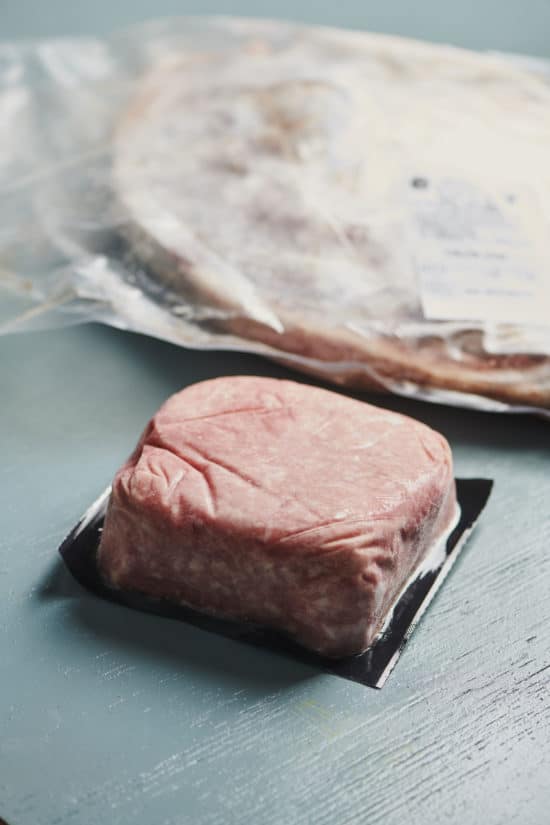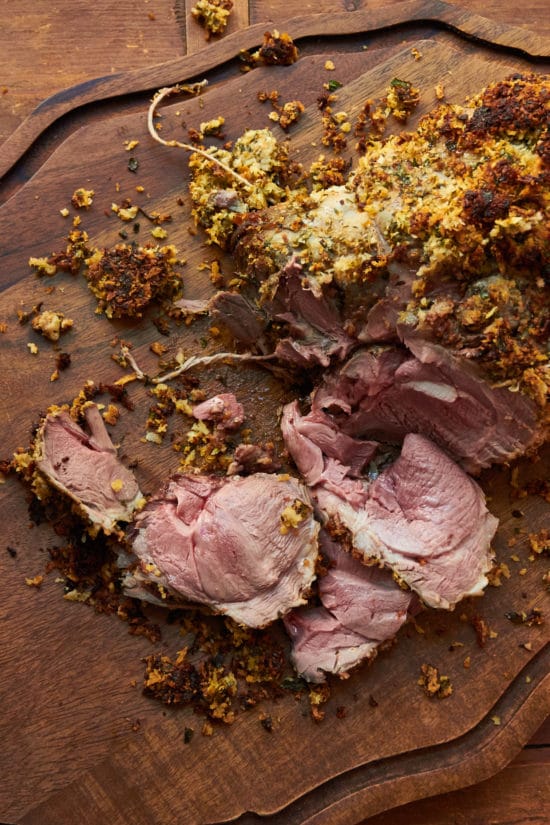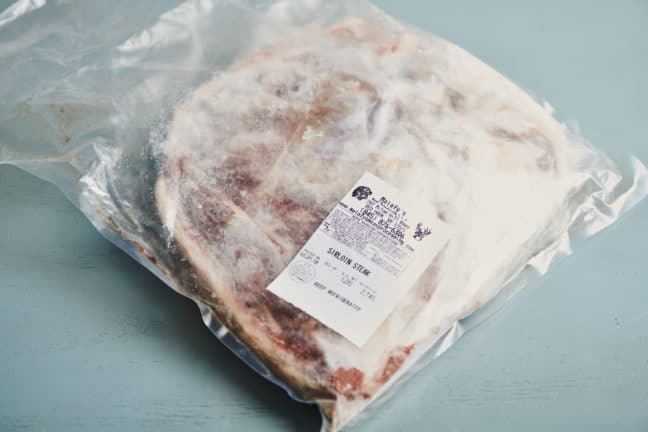How Long to Defrost 2 Pounds of Beef at 100 F
Thawing frozen meat can make people nervous — no one wants to create any risk of foodborne illness. But keeping meat in the freezer is a smart way to cut down on trips to the market, and take advantage of great sales on your favorite cuts of meat.

Never Thaw Meat at Room Temperature
For safety reasons, meat should never be thawed on the counter at room temperature or in a bowl of warm or hot water (anything over 105 degrees F). The following methods will show you how to thaw meat and keep it out of the temperature zone that allows bacteria to grow, 40 degrees to 140 degrees F, which is the "danger zone" for the growth of microorganisms.
Best Ways to Defrost Meat
In general, larger cuts of meat should be defrosted in the refrigerator, as the meat will start to cook on the outside if it is thawed in a microwave, and it will take a very long time in a bowl of water. Smaller or thinner cuts, like flank steak or pork chops, do well with the water thawing or microwave method.
Thawing Frozen Meat in the Refrigerator
This method is the most trustworthy and dependable method, also the one that you don't have to monitor while it's happening. The only downside is that it takes time, so you need to plan ahead, especially if you are thawing a big roast, or if you've frozen multiple steaks in a single package.
How Long Does Frozen Meat Take to Defrost in the Fridge?
A single layer package of lamb chops or a package of ground beef, for example, might take up to a day to fully thaw in the fridge, and a 4 pound roast or a large package of steaks could require two days, even more if it's very large piece of meat, like a big pork shoulder. Once defrosted, the meat can stay in the fridge for another day or two, provided it was frozen while quite fresh. Ground meat should be used within a day.

Quick Thawing Meat in Water
Frozen meat can be placed tightly sealed (either in vacuum sealed bags or sturdy, freezer proof, zipper-top storage bags) in a bowl of lukewarm or tepid water, no more than 100°F.

Do NOT use hot water! Besides possibly causing bacteria to form, warm water will also start to "cook" the outside of the meat before the middle is thawed). Change the water every 30 to 45 minutes to make sure the water stays cold, or place the bowl of water under a rapidly dripping faucet with water at the same temperature to keep the water circulating which speeds the process a bit.
How Long Does Quick Thawing Meat in Water Take?
Ground meat might thaw in an hour, a 1-inch thick or so steak will probably thaw in 1 to 2 hours, larger amounts and bigger cuts may take a few hours.
If you are thawing multiple pieces of meat in a bag, once the individual pieces have thawed enough to be separated, open the bag, pull the pieces apart, then reseal the bag (make sure it's sealed tightly!) and return it to the water.
This will speed up the process and allow the meat to thaw more evenly. Keep checking and changing the water; once the meat is thawed using the quick thaw in water method it should be cooked right away. Don't put it back in the fridge, and do not refreeze.
Thawing Meat in a Microwave
These days many microwaves have special settings for thawing meat (and lots of other items), and your instruction manual will help you figure out the best way to do that in your particular microwave. It may even have specific directions for specific cuts of meat, which are very helpful in preventing the meat from starting to cook in the microwave.
If not, here's how to safely thaw meat in the microwave. Place the meat in a microwave proof bag or place it on a plate. Set the microwave to defrost, and then check every few minutes to see when it is thawed properly.
If you don't have a rotating tray, you will want to keep turning the plate every minute or so, and even if you do have a rotating tray, you may need to rearrange the meat if you are defrosting multiple pieces, as the ones on the outside will heat faster than the ones in the middle. Switch them partway through the thawing process. Remove individual pieces of meat as they are thawed.
Even if you are watching carefully, the thinner parts of the meat will probably start to cook a bit while the thicker parts are still thawing. Meat thawed in the microwave should not be stored back in the fridge, but needs to be cooked right away.
All the methods you need to know for defrosting frozen meat safely, from chops to ground beef to roasts.
Tweet This
Cooking Frozen Meat
You can cook some meat in its frozen state. The general rule of thumb is to add another 50% of cooking time from the time suggested in the recipe.
Smaller cuts of meat work best, such as stew meat, or thinly sliced meat. Slower cooking methods are best when you are cooking frozen meat—the meat does better texture wise in the slow cooker, in a braised recipe, when cooked in soups and stews. Other cooking methods (like sautéing, roasting, or microwaving) may yield slightly uneven results, with the outside of the chicken cooked more than the inside, or a less-than ideal texture.
As the meat thaws it releases moisture, which again is ok in the slower cooking methods that involve liquid, but not so great for things like searing or sautéing. Here you will not be able to get a nice browned exterior because the meat will be kind of steaming in its released water.
Also see How to Safely Thaw Frozen Chicken!
Source: https://themom100.com/2019/03/how-to-safely-thaw-meat/
0 Response to "How Long to Defrost 2 Pounds of Beef at 100 F"
Post a Comment